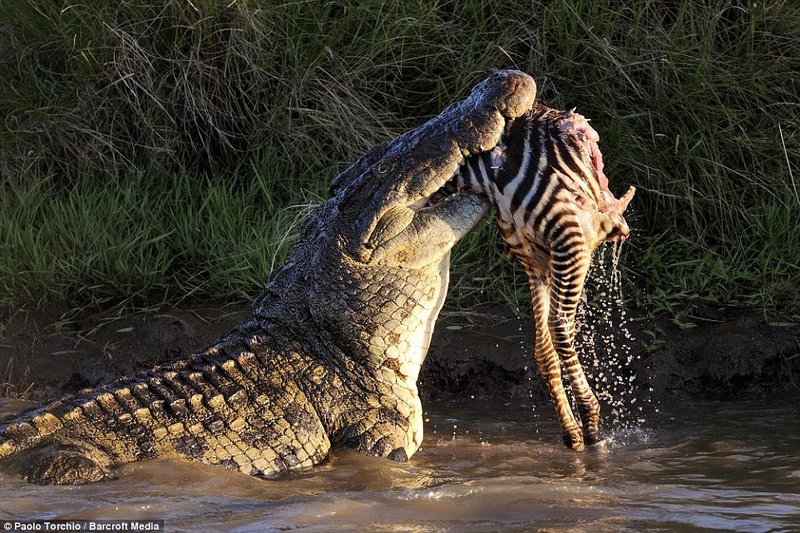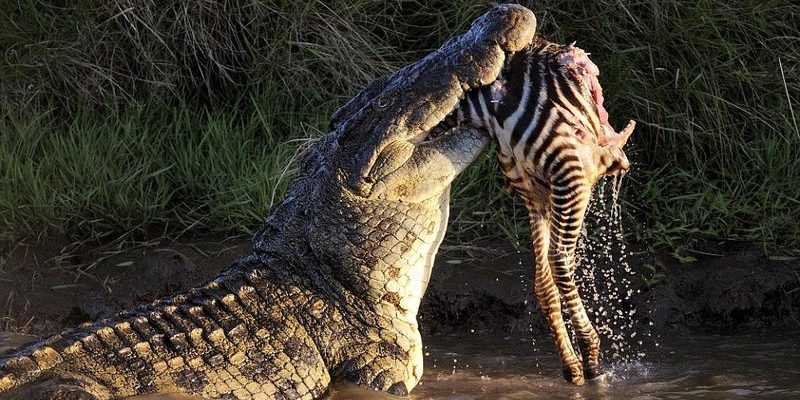
You might picture a crocodile as a brutal predator, and while they certainly have that reputation, their hunting style is more nuanced than it seems. Imagine being a skilled fisherman, sitting quietly by the water, waiting for the perfect moment to snag your catch—this is much like how Nile crocodiles operate. They’ve been doing this for millions of years, perfectly adapted to their environment and always ready to seize the right opportunity.
What Do Nile Crocodiles Eat?
Nile crocodiles are opportunistic eaters, which simply means they’ll take advantage of whatever food source is available. Their diet is quite diverse, ranging from fish to larger mammals, and yes, sometimes even the occasional bird. Here’s a breakdown of their primary food sources:
- Fish: Being semi-aquatic, fish make up a significant part of their diet. Nile crocodiles are skilled at catching fish with their powerful jaws.
- Birds: Crocs are known to snap up birds that come too close to the water’s edge. They’re quick, and their stealth can often be shocking.
- Mammals: They target a variety of mammals, from small antelopes to larger animals like zebras and buffalo when the opportunity arises.
- Carrion: If they come across dead animals, they won’t hesitate to eat carrion. This scavenging behavior is a smart survival tactic.
Honestly, this diverse diet is a key reason why Nile crocodiles have thrived for so long in their habitats. They’re not picky eaters, so they can adapt to whatever food is available, making them resilient survivors.
Hunting Techniques of the Nile Crocodile
Now, let’s talk about how these impressive reptiles hunt. Hunting isn’t just about brute strength; it’s also about strategy. Nile crocodiles are masters of ambush, using their environment to their advantage. Here’s how they do it:
1. Patience is Key
Crocodiles can remain perfectly still for hours, often hiding just below the surface of the water. This camouflaging technique makes it difficult for prey to spot them. Imagine playing hide and seek—the longer you stay hidden, the better your chances of surprising someone!
2. The Element of Surprise
Once their prey is close enough, crocodiles are lightning-fast. They can explode out of the water in a powerful lunge, catching their unsuspecting meal off-guard. This surprise attack is crucial, especially given how swift and agile their prey can be.
3. Powerful Jaws
When they catch their prey, they clamp down with incredible force. A Nile crocodile’s bite can exert more than 3,000 pounds of pressure per square inch, making it one of the strongest bites in the animal kingdom. That means once something is in their jaws, it’s not getting away!
4. Drowning Technique
If the prey is too large to swallow immediately, Nile crocodiles often utilize a drowning technique. They’ll drag the animal underwater, using their weight and strength to exhaust it before finishing the meal. It’s a dark strategy, but effective for these powerhouses of the river.
Habitat and Its Influence on Diet
The Nile crocodile’s habitat plays a huge role in its diet. Typically found in rivers, lakes, and wetlands, these areas are rich in biodiversity. Here’s how their habitat influences what they eat:
- Availability of Prey: The variety of fish, birds, and mammals around rivers means this reptile has a rich menu to choose from.
- Seasonal Changes: During the rainy season, the water levels rise, sometimes bringing more prey into their reach. These changes significantly affect what they eat as well.
- Human Interaction: As humans encroach on their territory, crocodiles are also known to adapt their diets. They sometimes scavenge near fishing villages or areas where livestock are present.
Here’s the thing: their ability to adapt to available food sources not only helps them survive but also highlights their importance within their ecosystems. They play a crucial role in keeping fish populations in check, which can help maintain a balanced environment.
The Importance of Hunting for Survival
Understanding how Nile crocodiles hunt is vital. These strategies aren’t just for show; they’re essential for their survival. Without efficient hunting skills, crocs wouldn’t be able to support themselves or their young.
Crocodile hatchlings are particularly vulnerable and often fall prey to larger animals. The more successful adults are at hunting, the more likely they are to pass on their genes to the next generation. This cycle of life is crucial in maintaining healthy populations of Nile crocodiles.
In wrapping this up, the Nile crocodile is much more than just a fierce predator. They showcase a blend of patience, strategy, and adaptability that allows them to thrive in their environment. Their diverse diet and unique hunting techniques not only make them fantastic survivors but also vital components of their ecosystems.
So, the next time you think about Nile crocodiles, remember they are skilled hunters, perfectly adapted to their aquatic homes. Their ability to eat a wide range of foods and their clever hunting strategies are a testament to their resilience, making them one of nature’s most fascinating creatures.

